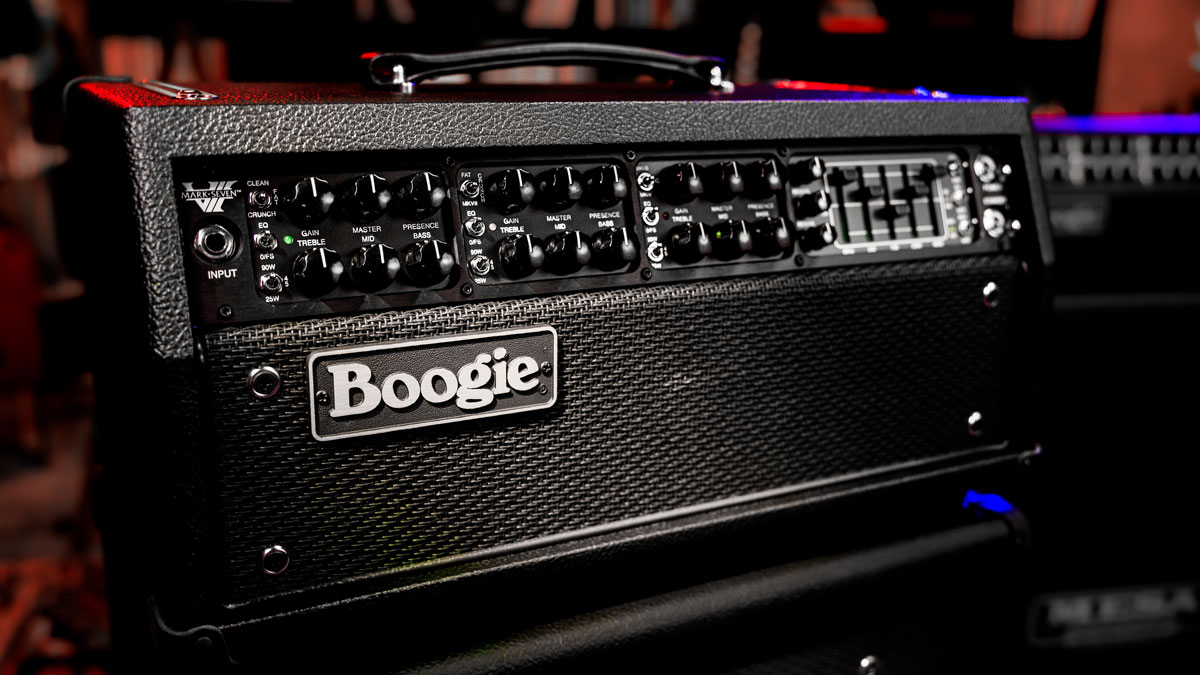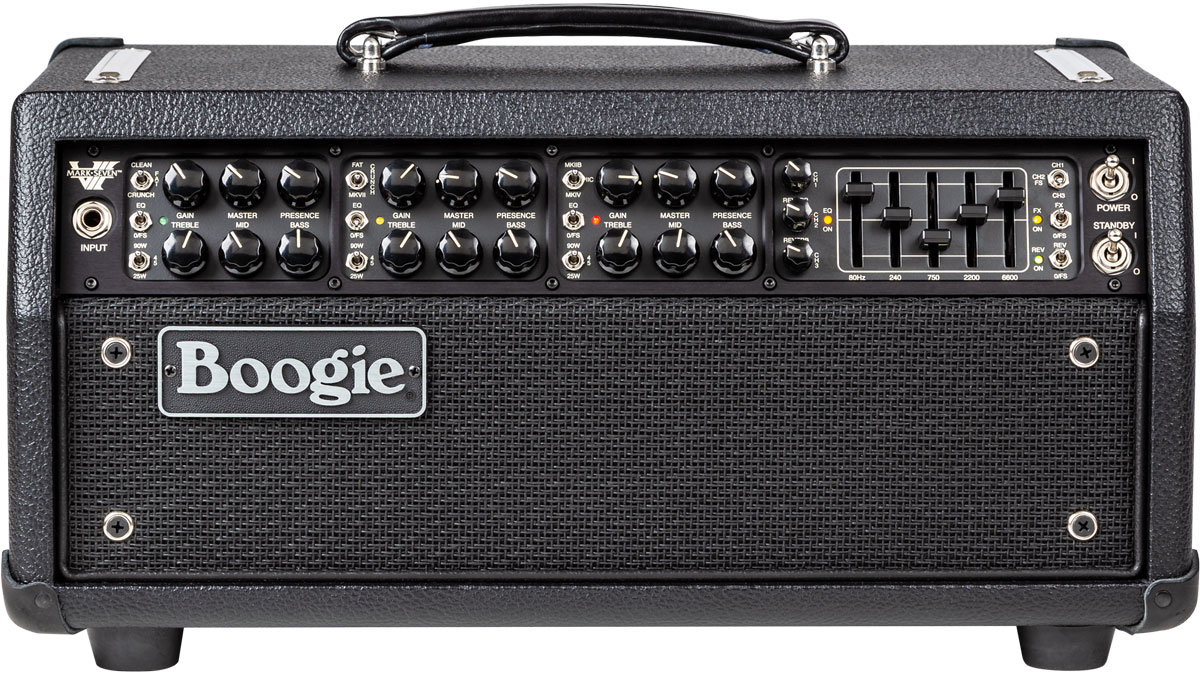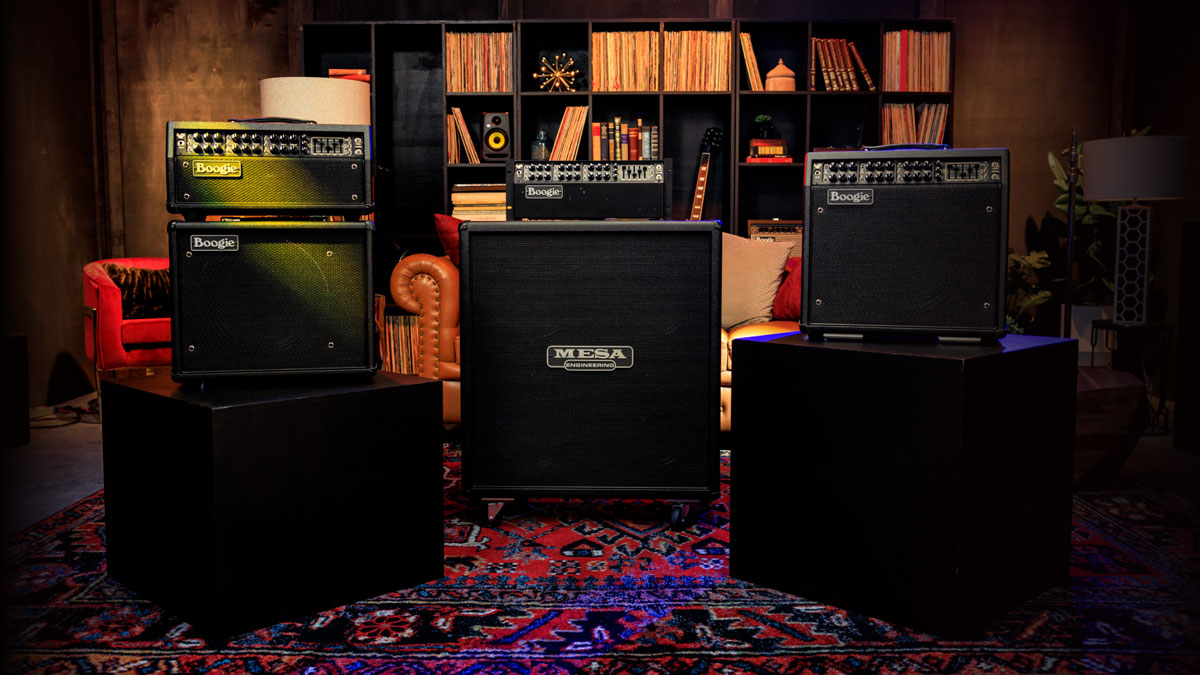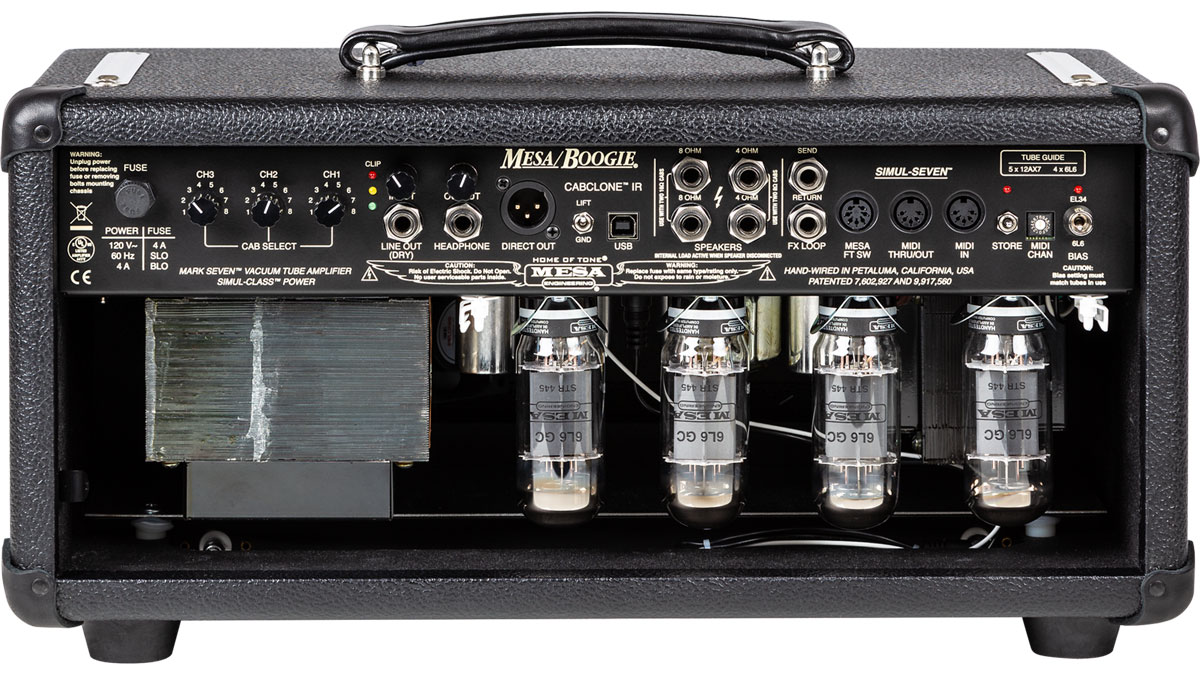
It's rumored that Mesa Boogie’s new Mark VII may be the last Mark Series amp designed by the company’s founder, Randall Smith (although we’re given assurance it’s not his last Mesa, Boogie or new Gibson design). If so, it’s a crowning achievement for a man who played a significant role in many of the most beloved guitar tones and modern amp features of the last five decades.
In the spirit of the very first Mesa Boogie amp, which delivered a revolutionary new high-gain preamp that signified the dawn of the modern guitar amp (along with the performance of a 100-watt stack packed into a small Fender Princeton combo), the Mark VII’s compact 19-inch, 40-pound chassis is loaded with an unfathomable variety of features and first-class tones – so many that I’m going to cut to the chase to cover as many of them as this space allows.
Features
The basic layout of the Mark VII is not much different than that of its Mark V predecessor introduced 14 years ago, with its control panel divided into three independent channels each with its own treble, mid, bass, presence, gain and master knobs and three mini switches for selecting voicing modes, graphic EQ assignment and 90/45/25-watt Simul-Class power amp output.
In fact, the front panel’s control layout is slightly more simplified, streamlined and intuitive than the Mark V’s with fewer switches and knobs, but the Mark VII still delivers incredibly powerful tone-shaping versatility.
The preamp voicing modes are also different than the Mark V, consisting of nine distinct amps (seven unique/two duplicated) in groups of three per channel – Clean/Fat/Crunch (1), Fat/Crunch/Mark VII (2) and Mark IIB/Mark IIC/Mark IV (3). The legendary five-band EQ is present, as is a long-tank spring reverb, outstanding effects loop (all individually assignable for each channel) and a bias switch for swapping the 6L6 power tubes for EL34s.

The Mark VII’s most notable new feature is its CabClone IR DI Direct Interface, which provides IR simulations of eight Boogie and Rectifier speaker cabinets in various open- and closed-back and 4x12, 2x12 and 1x12 configurations. CabClone is designed for direct recording and mic-free live performance applications, using the XLR Direct Out connected to a mixing console, and it also is heard via the amp’s headphone output.
Three eight-position Cab Select switches on the rear panel allow users to select any of the eight IRs independently for each channel, and users can manipulate or replace IRs via a computer connected to the amp’s USB port.
Other notable features include a dry 1/4-inch line out for re-amping applications, MIDI In and Out/Thru jacks and an included footswitch that connects to the amp via a 7-pin DIN connector and controls channel 1, 2 and 3, graphic EQ, effects loop and reverb on/off switching.
Performance

The Mark V provided a pretty damn good selection of classic Mesa Boogie amp tones, but I think that most players will find the Mark VII’s selections are even better.
The highly coveted Mark IIC is back and sounds as incredible as it did on the Mark V and JP2C, but the addition of a Mark IIB with its smooth, singing lead tones and super chunky distorted rhythm textures shows that Mesa aims to please a wider range of Boogie aficionados.
The new Mark VII preamp voice offers a bold new addition to the company’s legendary high-gain tone library, with more emphasized, sizzling upper mids than channel 3’s Mark IIB/IIC/IV preamps.
Mesa’s high-gain distortion tones get all the attention for their world-class wallop, but players who specialize in country, blues, rockabilly and roots music will love channel 1 as much as metal heads rave about channels 2 and 3.

The Clean setting has tight attack and aggressive punch with greater tonal range than a classic Fender, so every note of a boogie riff can bite like a rabid pit bull. Channel 1’s Crunch setting is like the ultimate classic Marshall with pristine crushed-glass harmonic overtones that shimmer.
Every channel and preamp setting has midrange that is simply dialed in to the sweet spot that most of us have spent thousands trying to achieve with various overdrive and distortion pedals and mods. Simply put, the Mark VII’s mids will assure that your guitar will cut through a mix like a sushi chef’s Yanagiba knife through a slab of premium otoro.
The CabClone IR section makes the Mark VII a solid contender for tube amp enthusiasts who are seduced by the capabilities of high-end digital amp modelers. The combination of preamp voices, Simul-Class responsiveness and character, powerful passive and graphic EQ and IR cabinets makes it easy to dial a universe of classic amp tones as well as a few new ones that will turn heads.
Specifications
- PRICE: $3,499
- TYPE: Tube amp head
- CHANNELS: 3, with 9 preamp modes
- POWER: 90-watts switchable to 25 and 45
- CONTROLS: Independent 3-position style Mode switch, graphic EQ assignment switch (On, Off, or Footswitchable), Multi-Watt 90/45/25 power amp switch, Gain, Treble, Mid, Bass, Presence, & Master Controls, Reverb (footswitchable), and an 8-Position CabClone IR Select Control (on back panel)
- FEATURES: Footswitchable tube-buffered effects Loop,
- SPEAKER OUTPUTS: 2x 8 Ohm and 2x 4 Ohm
- WEIGHT: 40 lbs / 18.14 kg
- CONTACT: Mesa/Boogie




!["[T]he First and Fifth Amendments Require ICE to Provide Information About the Whereabouts of a Detained Person"](https://images.inkl.com/s3/publisher/cover/212/reason-cover.png?w=600)


